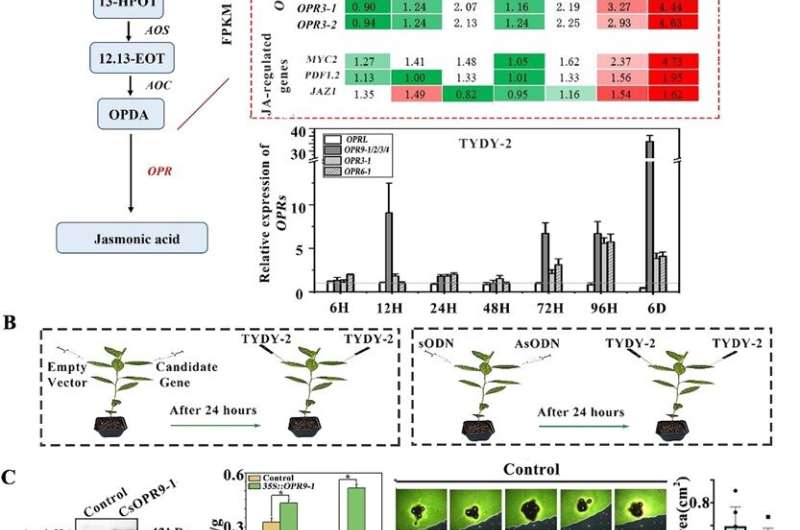This article has been reviewed according to Science X's editorial process and policies. Editors have highlighted the following attributes while ensuring the content's credibility:
fact-checked
peer-reviewed publication
proofread
Tea plant's genetic guardians: lncRNA-protein pairs bolster disease resistance

Long non-coding RNAs (lncRNAs) are vital in plant growth and stress resistance but are not well understood in tea plants. Previous research in model plants has shown that lncRNAs play crucial roles in various biological processes. However, the unique characteristics of tea plants present challenges in studying these RNAs.
Due to these issues, further in-depth research on trans-lncRNAs in tea plants was necessary. This study addresses these challenges by exploring the role of lncRNAs in enhancing disease resistance in tea plants through the jasmonic acid signaling pathway.
A new study, conducted by researchers from Anhui Agricultural University and published on May 6, 2024, in Horticulture Research, explores the role of evolutionarily conserved trans-lncRNA pairs in disease resistance in tea plants. The study identified and analyzed 24 trans-lncRNA pairs, focusing on their interaction with the 12-oxophytodienoate reductase gene and its impact on the jasmonic acid signaling pathway.
Researchers developed an innovative method to identify evolutionarily conserved trans-lncRNA pairs, uncovering 24 such pairs across various plant species. In tea plants, the CsOPRL gene cluster was found to regulate disease resistance by interacting with CsOPR genes. Experiments revealed that knocking out the CsOPRL gene in potato plants led to increased resistance to fungal infections, underscoring its crucial role in plant defense.
The study further demonstrated that CsOPRL forms RNA-DNA triplexes with target genes, inhibiting their expression and affecting the synthesis of jasmonic acid, a key compound in plant defense mechanisms.
These findings highlight the significant role of CsOPRL in modulating CsOPR gene expression and enhancing disease resistance. This research provides valuable insights into the genetic mechanisms underlying plant resilience and opens up new possibilities for improving crop resistance through genetic manipulation.
Dr. Tao Xia, one of the corresponding authors, stated, "Our findings provide new insights into the regulatory mechanisms of plant disease resistance. The identification of these trans-lncRNA pairs opens up new avenues for enhancing crop resilience through genetic manipulation."
This research lays the groundwork for developing new strategies to improve disease resistance in crops, particularly in non-model plants like tea. By leveraging the regulatory mechanisms of trans-lncRNAs, scientists can potentially enhance the resilience of various crops, leading to more sustainable agricultural practices and improved food security.
More information: Ting Jiang et al, Evolutionarily conserved 12-oxophytodienoate reductase trans-lncRNA pair affects disease resistance in tea (Camellia sinensis) via the jasmonic acid signaling pathway, Horticulture Research (2024). DOI: 10.1093/hr/uhae129
Journal information: Horticulture Research
Provided by Anhui Agricultural University





















